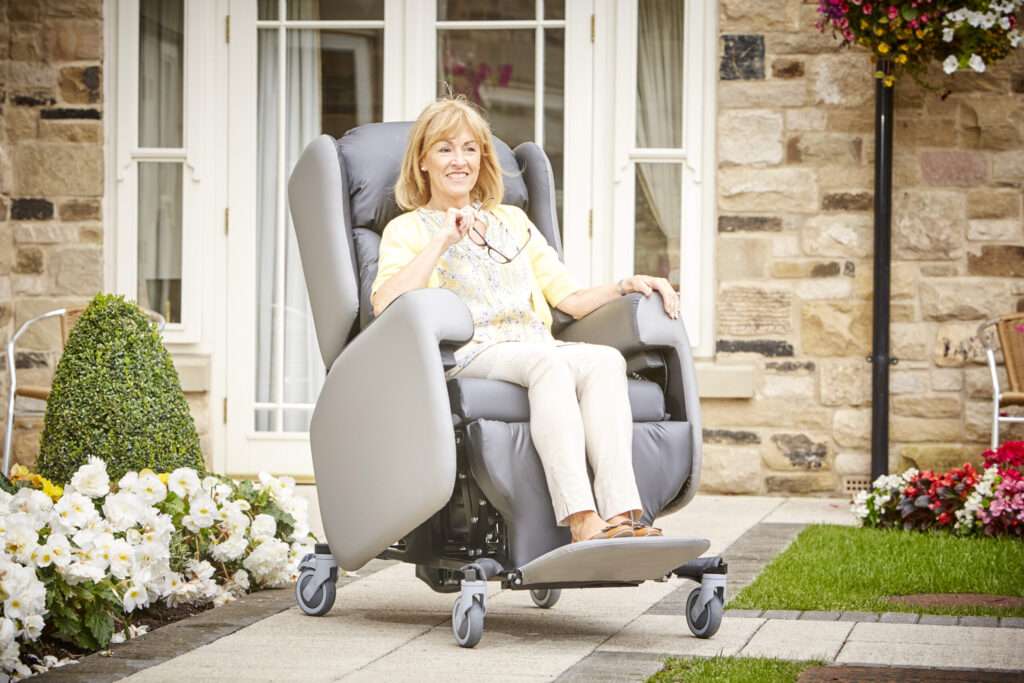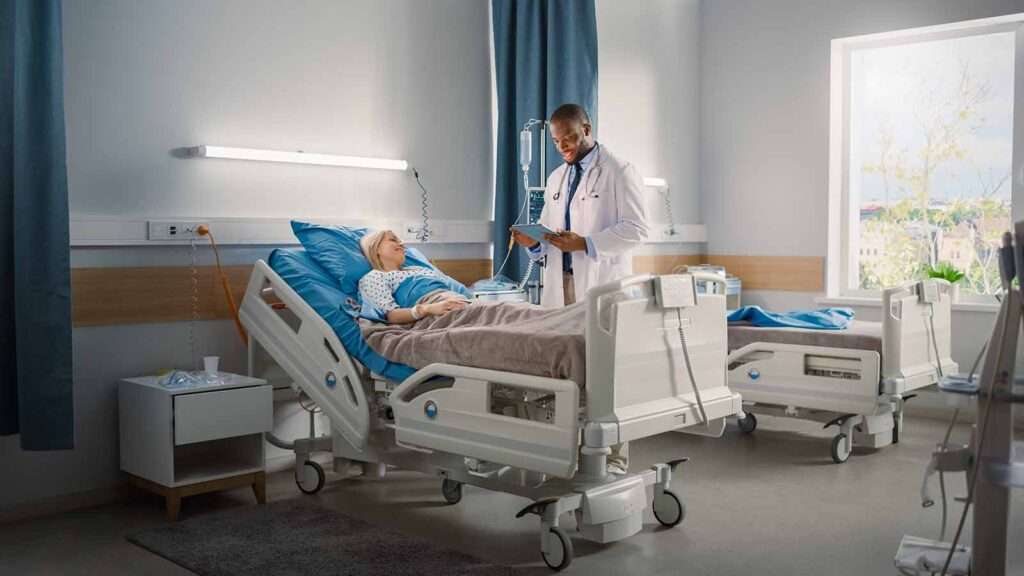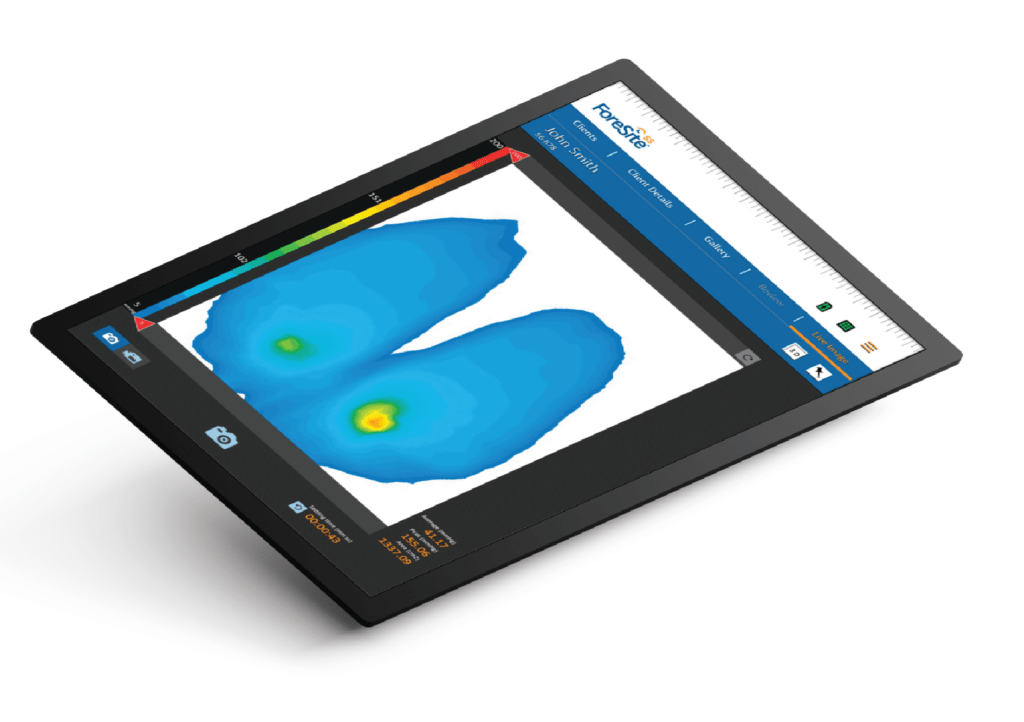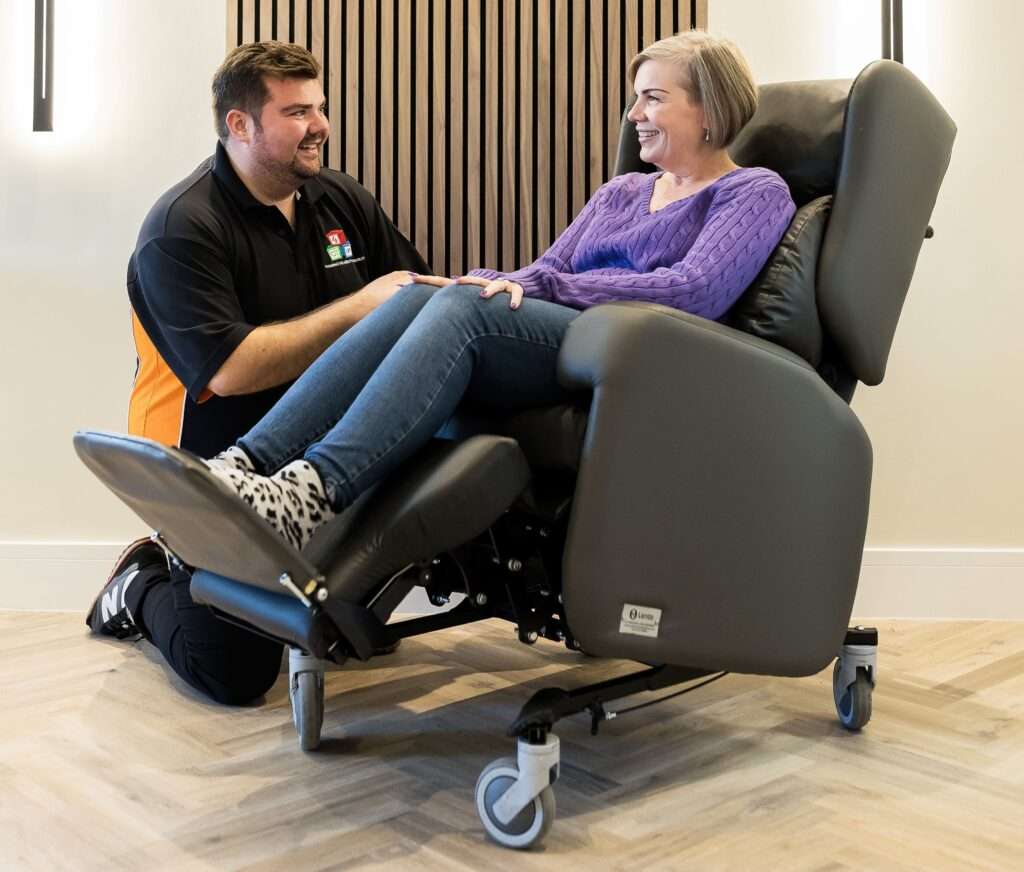Choosing the right cushion or mattress material can make a world of difference in your comfort, whether you’re upgrading your bed or outfitting a chair for long sitting periods.
Among the most popular materials available today are Cool Gel and Visco Foam, each offering distinct benefits and catering to different comfort and support needs. There are also “Alternating Air Cushions” available, for those who are at very high risk of developing pressure ulcers. But which one is right for you?
In this blog post, we will focus on exploring the differences between Cool Gel, Visco Foam and Alternating Air Cushions, and how to decide which is the best option for your specific requirements.
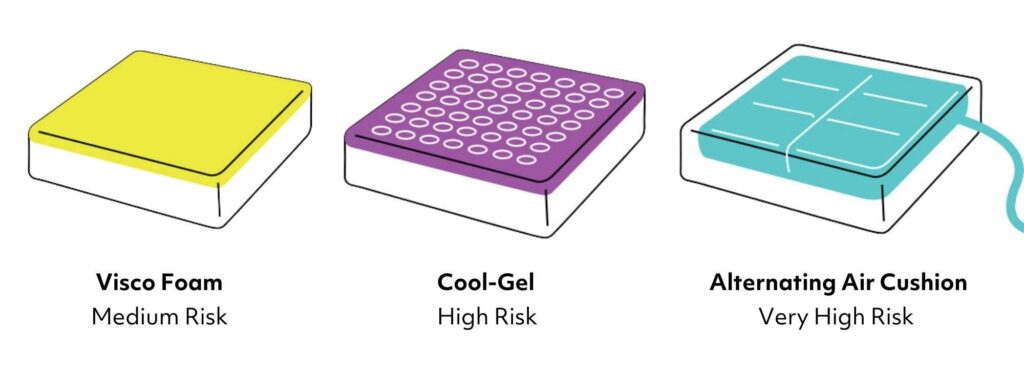
Jump straight to…
What is Cool Gel?
When referred to in the context of beds and mattresses, Cool Gel is a gel-infused memory foam that incorporates gel particles or layers to improve its cooling properties. Traditional memory foam, while offering excellent comfort and support, tends to retain heat, which can be uncomfortable for sleepers or people sitting for long periods.
The addition of gel particles or layers helps dissipate heat, making Cool Gel foam an excellent option for individuals who tend to feel hot when they sleep or sit for extended periods. The gel acts as a thermal conductor, drawing heat away from the body and helping regulate temperature for a cooler and more comfortable experience.

When used in seating and seat cushions, coolgel refers to the layer of encased gel that is added beneath the seat cover on top of the seat cushion foam to provide enhanced pressure relief for higher need users.
As shown in the image below, it is shaped into small circular pads, and contours to the shape of the person’s body, distributing pressure more evenly and improving skin integrity.
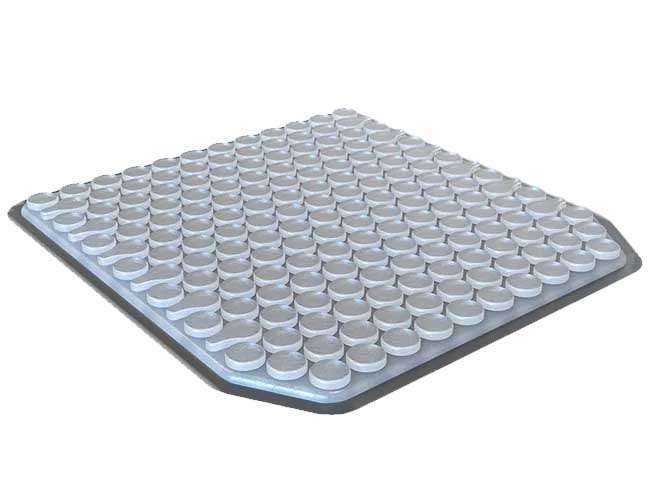
Coolgel pad
Coolgel is often used in mattresses, mattress toppers, seat cushions, and wheelchair pads, particularly for individuals seeking both support and temperature control.
Get A Chair That Won't Cause Pressure Sores
What is Visco Foam?
Visco Foam, more commonly known as memory foam, is a viscoelastic material designed to conform to the body’s shape, providing personalised support. Memory foam was originally developed by NASA in the 1960s to improve seat cushioning and crash protection for astronauts. Its unique ability to mould to the body’s contours made it a game-changer in the sleep and medical industries.
Visco Foam reacts to body heat and pressure, allowing it to soften and mould to the body. Once the pressure is removed, it gradually returns to its original shape. This makes it excellent for pressure relief, especially for people who suffer from joint pain, muscle soreness, or other discomforts. Visco Foam is often used in mattresses, pillows, and cushions, offering both comfort and orthopaedic benefits.
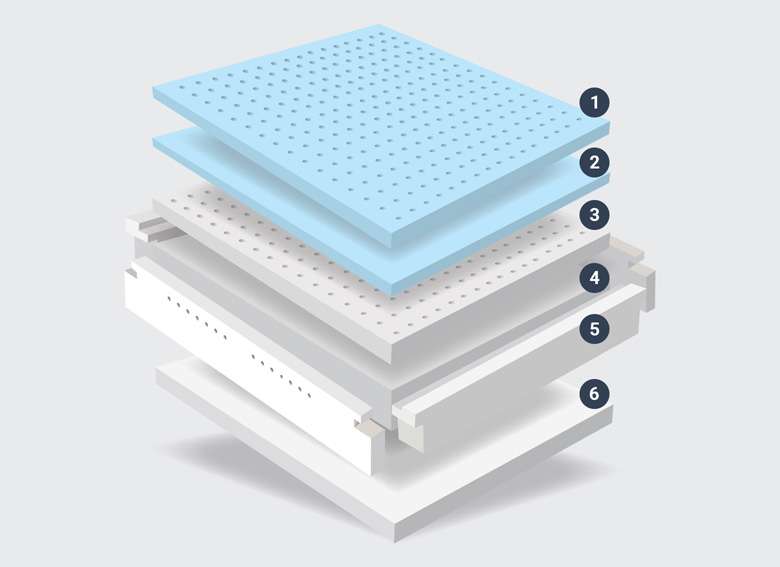
Coolgel mattress layers
What are Alternating Air Systems?
Medical airflow mattresses or cushions use advanced technology to reduce the risk of bedsores. They are made with alternating pressure and air-filled cells, which help distribute pressure evenly.
This feature helps relieve pressure on specific areas, improving blood circulation and reducing the chances of tissue damage.
The constant air flow and microclimate control also keep the skin dry and comfortable by managing moisture effectively.
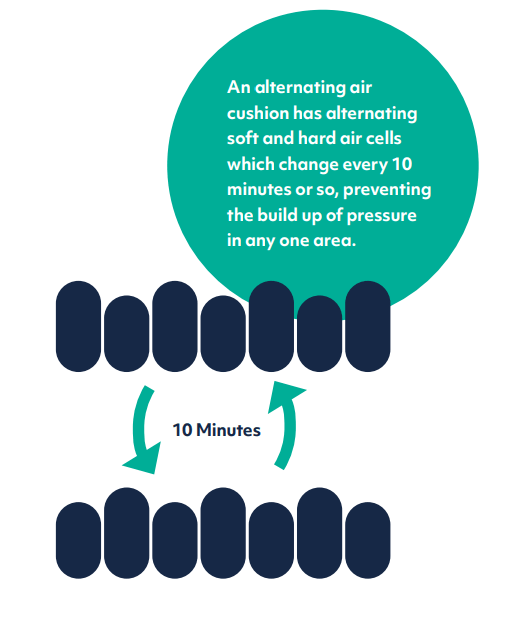
Applications and Uses
Cool Gel and Visco Foam are used in a variety of settings due to their versatile properties. Below are some common applications for each:
Cool Gel
Mattresses and mattress toppers for people who tend to sleep hot. Our range of Opera beds and mattresses includes the CoolGel mattress which has three layers, coolgel foam at the top, memory foam in the middle and comfort foam at the bottom.
Seat cushions for care chairs or riser recliners, office chairs, car seats, or wheelchairs to help with cooling during long sitting periods. The layer of gel is available in different thicknesses and can be shaped to the seat cushion, either used on its own or beneath the seat cover.
Pillows designed for individuals who experience night sweats or live in warmer climates.
Specialised cooling pads for medical purposes, such as in hospitals or care homes, to improve comfort for patients.
Visco Foam
Orthopaedic mattresses and pillows designed to relieve pressure points and promote proper spinal alignment. The memory comfort mattress is included in the Opera range, with a firmness rating of 4 which is medium to hard.
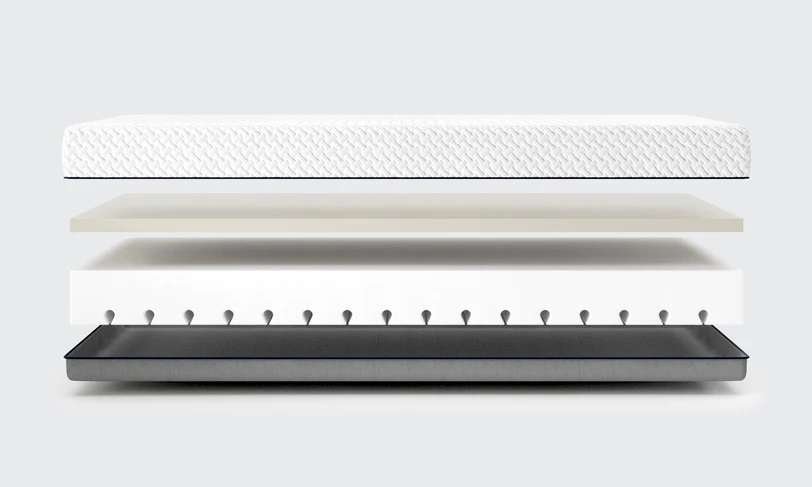
Memory comfort mattress layers
Seat cushions for individuals with back pain or those who need pressure relief in chairs or wheelchairs.
Memory foam toppers for beds, providing extra comfort and support for a better sleep experience.
Therapeutic devices like back supports, neck pillows, or post-surgery cushions that mould to the body for optimal healing and comfort.
Alternating Air Systems
Specialist seating cushions, mattresses, and pillows designed to treat or prevent the development of pressure ulcers on people who are considered “very high risk”. This usually includes people who are seated or in bed for long periods of time.
We Offer The Pressure Relief You Need
Different Levels of Pressure Relief
When it comes to pressure relief, all three technologies offer benefits, but they do so in slightly different ways:
Cool Gel
While Cool Gel offers some level of contouring and pressure relief similar to standard memory foam, its primary advantage lies in temperature regulation. For those who experience mild discomfort but prioritize cooling over deep contouring, Cool Gel might be ideal. However, Cool Gel foam generally offers slightly less support in areas like deep pressure relief compared to Visco Foam, which is more specialised for this purpose.
Visco Foam
Visco Foam is well-known for its superior pressure relief properties. It excels in distributing weight evenly, reducing stress on pressure points like the hips, shoulders, and spine. This makes it particularly beneficial for individuals with chronic pain, arthritis, or those recovering from injuries. If deep contouring and support are your primary concerns, Visco Foam may be the better option, as it tends to cradle the body more effectively.
Alternating Air Systems
Maintaining a healthy microclimate around the skin is crucial for preventing pressure sores. Excessive moisture, such as sweat or trapped humidity, can soften the skin and make it more vulnerable to damage.
Medical airflow mattresses incorporate microclimate control features to manage moisture effectively.
Some mattresses have a low air loss system that circulates air through the mattress surface, reducing perspiration and maintaining a dry environment. The continuous airflow through the mattress surface reduces moisture buildup, enhancing patient comfort and minimising the risk of skin breakdown.
How to Decide Which is Right for Your Bed or Chair
Choosing between Cool Gel and Visco Foam depends largely on your personal needs and preferences. Here are a few key factors to consider:
Temperature Sensitivity – Do You Sweat or “Sleep Hot”?
If you tend to overheat during sleep or while sitting, Cool Gel foam’s cooling properties will be more suitable. It helps regulate body temperature, making it ideal for those living in warmer climates or who struggle with night sweats. Air flow mattresses also prevent build-up of moisture and keep the skin dry, so this could be a great option.

Coolgel mattress and pillow
Let Us Get You Comfortable
Pressure Relief – Do You Have Bed Sores?
If you suffer from pressure sores, or are an individual with a medical conditions that requires enhanced comfort, Cool Gel or an Alternating Air System will be best. Their abilities provide superior support and helps alleviate pressure points.
Combination of Needs
Some products now combine both Cool Gel and Visco Foam, offering the best of both worlds—cooling and pressure relief. If you can’t choose between the two or need a balance of both cooling and contouring, these hybrid products might be worth considering.
Application
If you’re buying for a mattress, think about your sleeping position, any pain issues, and temperature needs. For a chair, consider how long you’ll be seated and whether cooling or deep support will make a bigger impact on your comfort.
Conclusion
Both Cool Gel and Visco Foam have their own distinct advantages, and the right choice depends on your individual needs. Cool Gel excels in cooling and is perfect for people who overheat easily, while Visco Foam is unmatched in terms of pressure relief and support. An Alternating Air System might be the right option if you are elderly, or are seated for long periods of time as this would make you at higher risk of developing bed sores. If you’re struggling to choose, consider what your primary comfort concerns are—temperature regulation or pressure relief—and choose accordingly. Alternatively, you might explore hybrid options that combine both materials for a customised experience. Either way, both materials are designed to enhance comfort, so you can’t go wrong with either choice!
Get Expert Advice
Frequently Asked Questions
What are the best cushions for pressure sores on buttocks?
For treating and preventing bed sores, we would recommend a cushion or mattress with cool-gel or an alternating air technology inside. These are designed to ease the load on your pressure points, and improve circulation. They will also provide a cooling effect, and therefore reduce sweating which can cause bed-sores to become worse. It is always a good idea to consult an Occupational Therapist to help you identify the best product for you, and if you have pressure wounds already then you should visit your GP.





